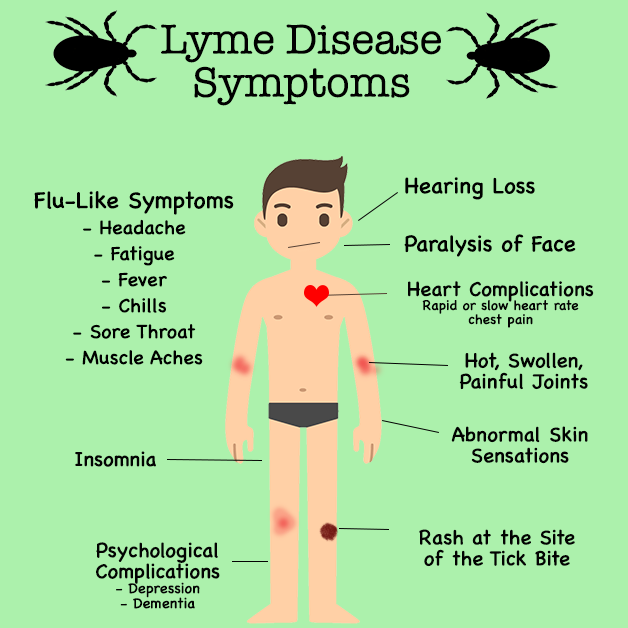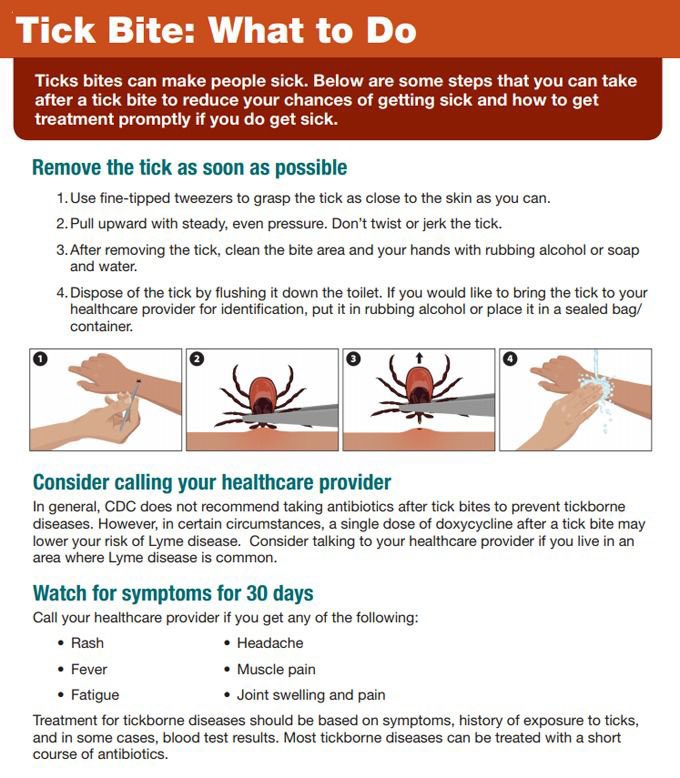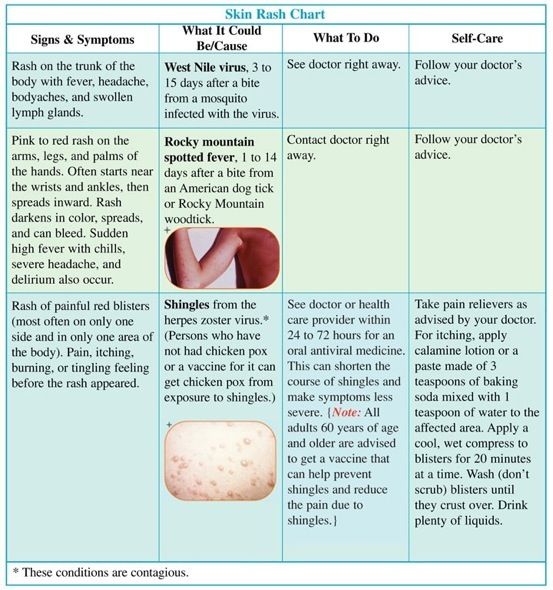Tick bite rash treatment. Comprehensive Guide: How To Treat A Tick Bite And Prevent Lyme Disease
What is Lyme disease? How to diagnose and treat tick bites? Effective tips to prevent Lyme disease. Explore the comprehensive details.
Understanding Lyme Disease
Lyme disease is a bacterial infection caused by the bite of an infected tick. It was first recognized in 1975 when a large number of children around the town of Lyme, Connecticut, were being diagnosed with juvenile rheumatoid arthritis. Researchers investigated and found that tick bites were the root cause of these illnesses.
The disease is primarily carried by black-legged ticks, also known as deer ticks, which are typically the size of a sesame seed. While the Northeast, mid-Atlantic, North central states, and West Coast regions of the United States are more prone to Lyme disease, cases have been reported in almost every state.
Symptoms of Lyme Disease
Lyme disease can manifest in various stages, with early symptoms appearing within 3 to 30 days after a tick bite. These include fever, chills, headache, fatigue, joint and muscle aches, and a distinctive rash that often resembles a bull’s-eye pattern. However, not everyone with Lyme disease will develop the characteristic rash.

If left untreated, Lyme disease can spread to other parts of the body, leading to late-stage symptoms such as headaches, neck stiffness, arthritis, additional rashes, facial palsy, irregular heartbeat, numbness in the arms or legs, and changes in mood or sleep habits.
Diagnosing Lyme Disease
Diagnosing Lyme disease can be challenging, as the symptoms are often similar to other illnesses, and the ticks that carry the bacteria are very small, making it difficult to remember being bitten. If you find a tick attached to your skin, remove it immediately and wait a few days to see if any symptoms develop. If you do experience symptoms, contact your healthcare provider.
Your doctor may perform a physical examination, looking for the characteristic rash and signs of tick bites, and may order blood tests to confirm the diagnosis. However, these tests are not always reliable, especially in the early stages of the disease.
Treating Tick Bites and Lyme Disease
If you find a tick attached to your skin, remove it immediately using fine-tipped tweezers. Grasp the tick as close to the skin as possible and pull it straight out. Avoid twisting or jerking the tick, as this may cause the mouthparts to break off and remain in the skin.

After removing the tick, clean the bite area with soap and water or an antiseptic. Monitor the bite site for any signs of a rash or other symptoms. If you develop a rash or experience other symptoms, seek medical attention promptly.
Lyme disease is typically treated with antibiotics, which are most effective when administered early in the course of the illness. Your healthcare provider may prescribe a course of antibiotics, such as doxycycline, amoxicillin, or cefuroxime, based on the stage and severity of your symptoms.
Preventing Lyme Disease
The best way to prevent Lyme disease is to avoid being bitten by ticks in the first place. When spending time outdoors in areas where ticks are known to thrive, follow these preventive measures:
- Avoid wooded, brushy, or tall grass areas.
- Walk in the center of trails.
- Use an insect repellent containing at least 20% DEET.
- Treat clothing, tents, or other gear with repellents containing 0.5% permethrin.
- Wear light-colored clothing to easily spot ticks.
- Wear long-sleeved shirts and long pants, tucking pant legs into socks or boots.
- Thoroughly check your body, your children, and your pets for ticks after being outdoors.
- Shower or bathe as soon as possible to wash off any unattached ticks.
The Importance of Early Detection and Treatment
Prompt diagnosis and treatment of Lyme disease are crucial to prevent the spread of the infection and the development of more serious complications. If you suspect you have been bitten by a tick or are experiencing any symptoms of Lyme disease, do not hesitate to seek medical attention. Early intervention with appropriate antibiotics can significantly improve the chances of a full recovery.

Conclusion
Lyme disease is a serious, but treatable, bacterial infection that can have lasting consequences if left untreated. By understanding the symptoms, taking preventive measures, and seeking prompt medical care, you can reduce your risk of contracting Lyme disease and ensure a successful recovery if you do become infected. Stay vigilant, especially when spending time in areas where ticks are prevalent, and don’t hesitate to consult your healthcare provider if you have any concerns.
Lyme Disease – Symptoms, Diagnosis, Treatment
What is Lyme disease?
Lyme disease is a bacterial infection that is caused by a tick bite. It was first recognized in 1975 when large numbers of children around the town of Lyme, Connecticut, were being diagnosed with juvenile rheumatoid arthritis. Researchers investigated and found that tick bites were causing the illnesses.
Lyme disease is carried by black-legged ticks (sometimes called deer ticks). These ticks are typically about the size of a sesame seed. They live mostly in certain areas of the country:
- Northeast and mid-Atlantic (northeast Virginia to Maine)
- North central states (mostly Wisconsin and Minnesota)
- West Coast (mostly northern California)
However, Lyme disease can be found in other parts of the United States. While you are more likely to get it in the above regions, cases of Lyme disease were reported in almost every state in 2017. The disease is also found in Europe, Asia, and Australia.
What are the symptoms of Lyme disease?
Early symptoms (3 to 30 days after a tick bite):
- Fever
- Chills
- Headache
- Fatigue
- Joint and muscle aches
- Rash
- Swollen lymph nodes
The rash is a telltale sign of Lyme disease. It usually starts at the site of the tick bite. It expands gradually over a few days. It can reach up to 12 inches across or more. The center may fade, creating a “bull’s eye” or target appearance. The rash may feel warm to the touch.
Some people with Lyme disease do not get the bull’s-eye rash. They may have many red spots instead. Others don’t get a rash at all. Around 75% of people with Lyme disease get a rash.
Later symptoms (days to months after a tick bite):
If Lyme disease isn’t treated, it can spread to other parts of the body. Late-stage symptoms include:
- Headaches
- Neck stiffness
- Arthritis (painful, swollen joints)
- Additional rashes
- Facial palsy (face muscles droop)
- Irregular or slow heartbeat
- Numbness in arms or legs
- Inflammation of the brain and spinal cord
- Changes in mood or sleep habits
- Short-term memory problems
- Nerve pain
It is normal to have a small bump or red spot where a tick bit you. This does not mean you have Lyme disease. It usually goes away in a day or two.
This does not mean you have Lyme disease. It usually goes away in a day or two.
What causes Lyme disease?
People get Lyme disease when they are bitten by an infected tick. Ticks live in areas with a lot of plant life, such as wooded areas or fields. They sit near the top of grassy plants and low bushes. They wait there for people or animals to brush up against them. Ticks can crawl on your clothes or body for up to several hours or more before attaching to the skin.
Ticks can attach to any part of your body. They are usually found in hard-to-see areas, including the armpits, groin, or scalp. An infected tick needs to be attached to your skin for 36 to 48 hours before it passes the bacteria on to you.
People who spend time in outdoor areas where ticks are common are at higher risk of getting tick-borne diseases.
How is Lyme disease diagnosed?
It can be difficult to diagnose Lyme disease. The ticks that carry it are very small and the bites don’t hurt.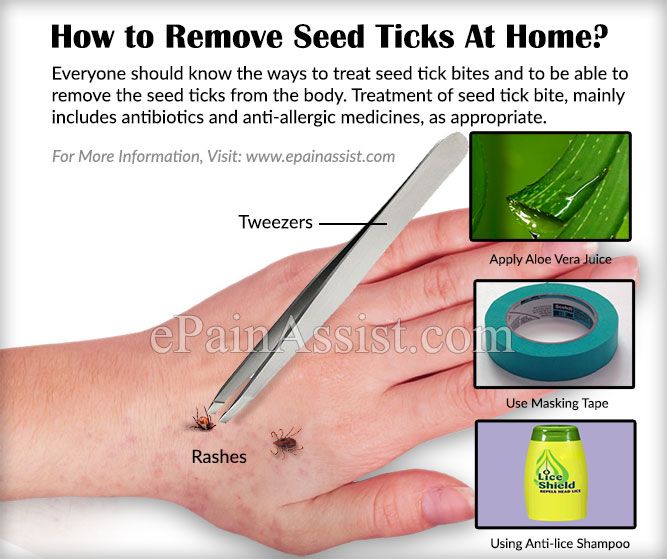 Many patients don’t remember being bitten. In addition, most of the symptoms are common with other illnesses.
Many patients don’t remember being bitten. In addition, most of the symptoms are common with other illnesses.
If you find a tick in your skin, use tweezers to remove it immediately. Then wait a few days to see if you develop any symptoms. If you do, call your family doctor. Your doctor will ask you about your symptoms. They will look at the bite and check for a rash. They may order a blood test. But those aren’t always necessary to make the diagnosis. They can often give false results, especially in early-stage Lyme disease.
People who have joint swelling or nervous system problems may need to have special tests. Your doctor may need to take some fluid from the swollen joint or the spine to check for clues to your condition.
If you have been sick for 4 weeks or more, call your doctor. They can give you a blood test at this stage. It will tell you if you have Lyme disease.
Can Lyme disease be prevented or avoided?
The best way to prevent Lyme disease is to avoid being bitten by ticks.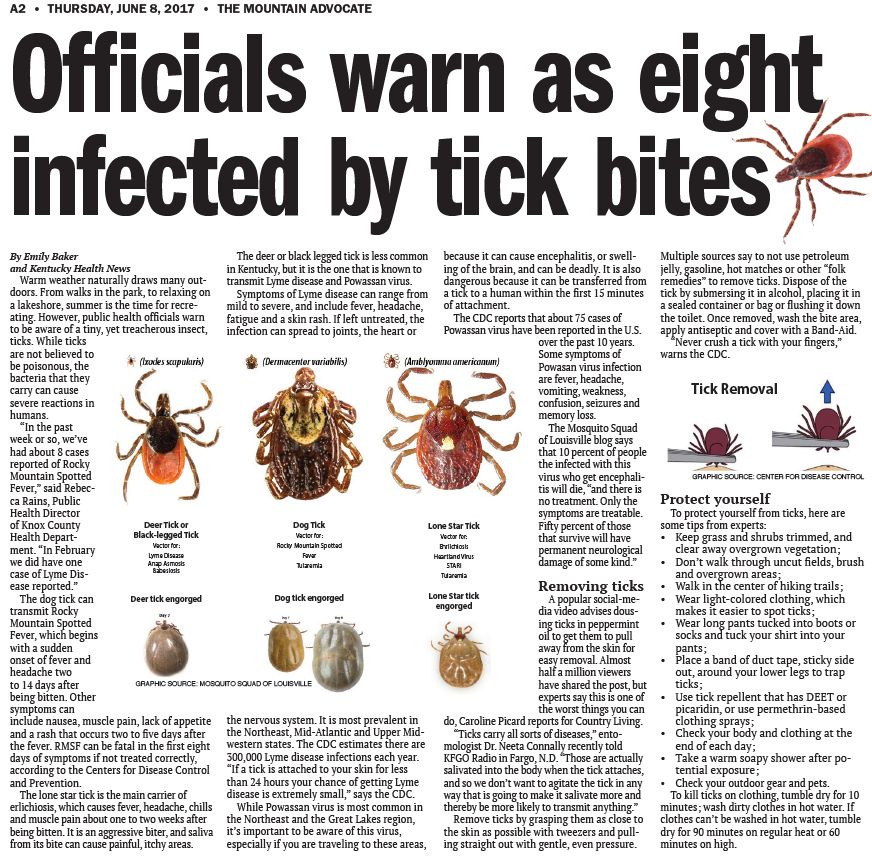 When you are outdoors, follow these guidelines:
When you are outdoors, follow these guidelines:
- Avoid areas that are wooded, brushy, or have tall grass.
- Walk in the center of trails.
- Use an insect repellent with at least 20% DEET. It can be put on clothing or sparingly on the skin. Don’t apply it to the face or hands of children.
- Treat clothing, tents, or other gear with repellents containing 0.5% permethrin.
- Wear light-colored clothing. This makes it easier to see and remove ticks from your clothes.
- Wear a long-sleeved shirt and long pants. Tuck your pant legs into your socks or boots for added protection.
After you get home, check everything and everyone for ticks.
- Bathe or shower as soon as you can to wash off any ticks that have not attached to you.
- Check your entire body for ticks. Use a mirror for places you can’t see. Check your children and your pets. Common tick locations include the back of the knees, groin area, underarms, ears, scalp, and the back of the neck.

- Check any gear you used, including coats, backpacks, or tents.
Tumble dry clothes or blankets on high heat in the dryer for 10 to 15 minutes. This should kill any ticks. If clothes are dirty, wash them in hot water and dry on high heat for 60 minutes.
Lyme disease treatment
What do I do if I find a tick on my skin?
Don’t panic. Use fine-tipped tweezers to grasp the tick as close to the skin’s surface as possible. Pull up with steady, even pressure. Be careful not to squeeze or twist the tick body. Sometimes parts of the tick remain in the skin. You can leave them alone or carefully remove them the same way you would a splinter. Do not use heat (such as a lit match), petroleum jelly, or other methods to try to make the tick “back out” on its own. These methods are not effective.
Wash the area where the tick was attached thoroughly with soap and water. Keep an eye on the area for a few weeks and note any changes. Call your doctor if you develop a rash around the area where the tick was attached. Be sure to tell your doctor that you were bitten by a tick and when it happened.
Be sure to tell your doctor that you were bitten by a tick and when it happened.
How is Lyme disease treated?
Lyme disease is treated with antibiotics. In most cases, people bitten by a tick are given antibiotics only if they are sick or have a rash. If you are bitten by a tick but don’t get sick or get a rash, you don’t need antibiotics.
Early-stage Lyme disease responds very well to treatment. In most cases, taking an antibiotic for 2 to 4 weeks kills the bacteria and clears up the infection. Your doctor will tell you how long to take the antibiotic. It’s important to take all the medicine your doctor prescribes. This will prevent the spread of Lyme disease to your joints, nervous system, or heart. If you have problems with the medicine, do not quit taking it. Call your doctor and talk to them about your side effects.
Late-stage Lyme disease is also treated with antibiotics. It may be necessary to give the antibiotics intravenously (through an IV) at this stage.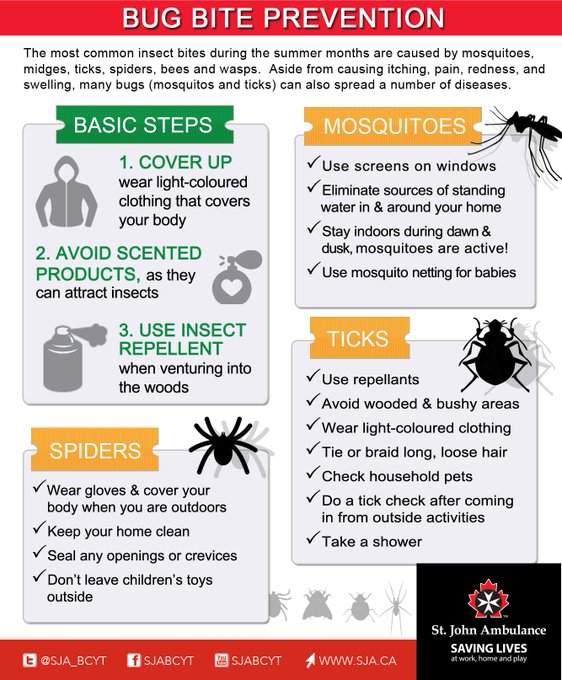 Medicine that reduces swelling and pain can ease arthritis associated with late-stage Lyme disease. If necessary, excess fluid can be drained from any affected joints.
Medicine that reduces swelling and pain can ease arthritis associated with late-stage Lyme disease. If necessary, excess fluid can be drained from any affected joints.
Living with Lyme disease
Most people treated in the early stages of Lyme disease make a quick and complete recovery. Some may experience symptoms for a few weeks after treatment. If you were treated for Lyme disease but you still don’t feel well, call your family doctor. They can make sure there isn’t something else wrong. They can help you find ways to ease your symptoms. Some patients have found relief with treatments typically used for chronic fatigue syndrome or fibromyalgia.
Other things you can do to help manage Lyme disease include:
- Educate yourself. There is a lot of inaccurate information to be sorted through, especially on the internet. Ask your doctor if you have questions.
- Track your symptoms. Keep a diary of your sleep patterns, eating habits, exercise routines, and how you’re feeling.
 You or your doctor may be able to make connections between them.
You or your doctor may be able to make connections between them. - Take care of yourself. Eat a healthy diet. Exercise as regularly as you can. Get plenty of rest.
- Find support.It can be hard to not feel well and not know why. Some people may think your symptoms aren’t real. Talk to friends and family. If they can’t offer support, talk with a counselor who can help you.
Questions to ask your doctor
- I found a tick embedded in my skin, but I can’t get it out. What should I do?
- I’ve been bitten by a tick. Do I need to be seen?
- Do I need a blood test to confirm Lyme disease?
- Which antibiotic is best for me?
- How long will I have to take the antibiotic?
- What tick or insect repellent should I use for me or my child?
- How long will the symptoms last?
- What should I do if I still don’t feel well a long time after I was bitten?
Resources
Centers for Disease Control and Prevention: Lyme Disease
National Institute of Allergy and Infectious Diseases: Lyme Disease
U. S. National Library of Medicine: Lyme Disease
S. National Library of Medicine: Lyme Disease
National Institutes of Health, MedlinePlus: Lyme Disease
Tick bites: Symptoms and treatment
Just thinking about ticks can make your skin crawl. But if you enjoy hiking, hunting, time at the cabin or other shady, damp environments, encounters with ticks can be part of the package.
We’d all prefer to avoid tick bites, but if you find yourself dealing with one, there’s no need to worry – they’re often harmless. We’ll explain how to identify tick bite symptoms, how to remove a tick at home and when you should see a doctor for treatment.
What is a tick exactly?
Ticks are tiny bugs that have eight legs and are related to spiders and mites. They feed off human and animal blood to survive. Ticks are often found in damp, cool, wooded areas during the spring through mid-summer, then again in the fall. But in some areas, they can be active during other seasons as well.
Types of ticks in Minnesota and the Upper Midwest
In Minnesota and the Upper Midwest, there are about a dozen different types of ticks.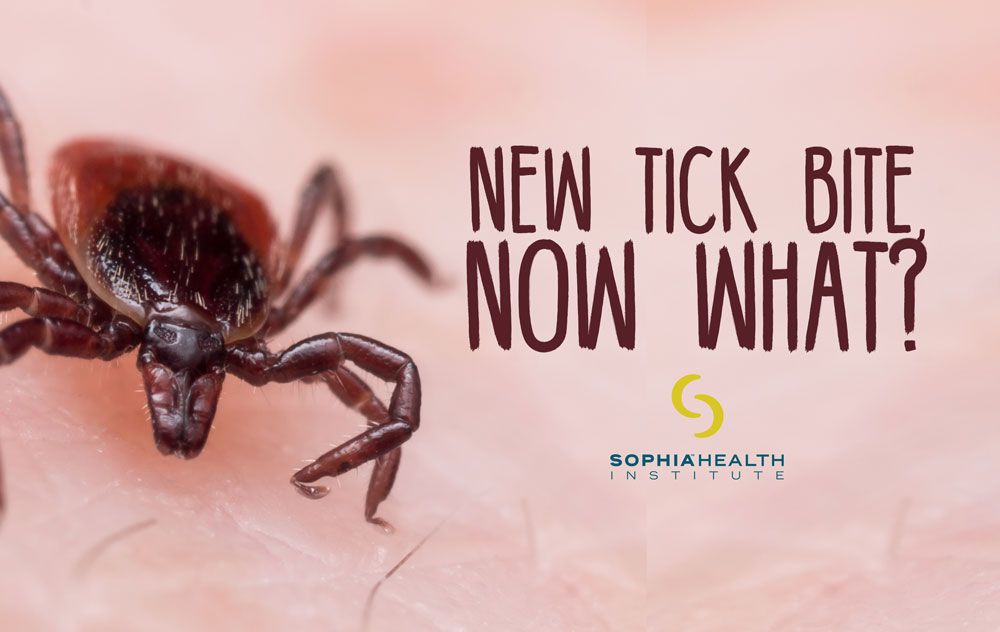 The three types of ticks that people come across most often are the blacklegged tick (deer tick), the American dog tick (wood tick), and the lone star tick.
The three types of ticks that people come across most often are the blacklegged tick (deer tick), the American dog tick (wood tick), and the lone star tick.
What does a tick look like?
Ticks can vary in appearance depending on the type of tick, its life stage and sex. Ticks can be grayish-white, brown, black, reddish-brown or yellowish in color. They can be as small as a grain of sand in the larvae stage to the size of a pencil eraser when fully grown.
When is tick season in Minnesota?
In Minnesota, ticks usually start to emerge after the snow melts, reaching peak activity during the month of May. They’re typically active throughout June.
As temperatures climb, tick activity declines until the fall, usually around the end of September through October. Tick season ends when temperatures drop below freezing or snow covers the ground.
Tick bite symptoms
Many people won’t experience any symptoms from a tick bite, but tick bites can cause:
- Small hard bumps or sores, redness or swelling
- Allergic reactions that can range from mild (local swelling and inflammation at the site of the bite) to severe (anaphylaxis)
- Flu-like symptoms, joint pain or a rash, which can also be symptoms of a tick-borne illness
What does a tick bite feel like?
Most likely, you won’t feel a tick bite because they don’t usually hurt.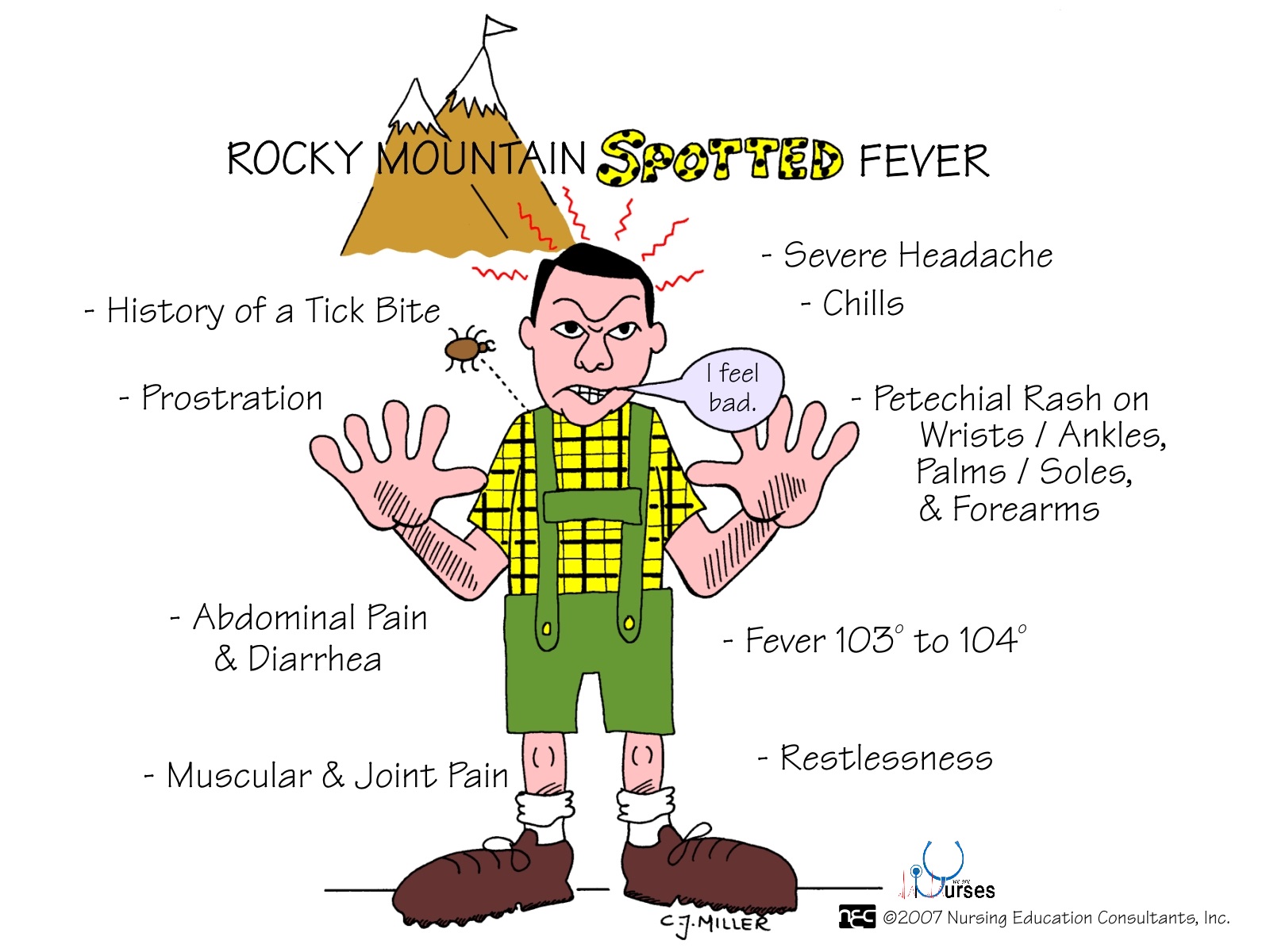 Ticks are often very small, so you might not see it until it’s been on you a few days and has grown larger. That’s why it’s important to check yourself when you’ve been in places where ticks live.
Ticks are often very small, so you might not see it until it’s been on you a few days and has grown larger. That’s why it’s important to check yourself when you’ve been in places where ticks live.
What does a tick bite look like?
A small bump may appear at the site of the tick bite. But if it develops into a rash, that may indicate illness. A rash usually appears 3-14 days after the tick bite but it can look different depending on the type of tick. Watch for small reddish or purplish spots, or expanded rashes that look like a bullseye.
Where to look for tick bites
If you or your children have been hiking, making mud pies or doing other activities in areas where ticks are common, it’s important to do a quick body check and run your fingers gently over your skin and hair. Ticks are often found behind the knees, between fingers and toes, and on underarms. It’s a good idea to check your belly button, neck, hairline, top of your head, and in and behind your ears, too.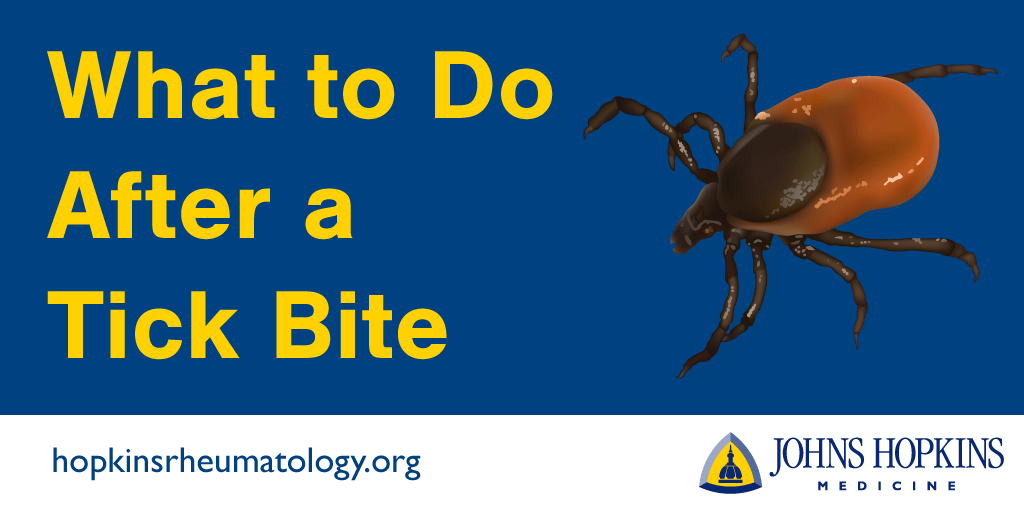
Symptoms of tick-borne diseases
If you’re having symptoms after a tick bite, it could be an indication that something more is going on. After you remove a tick, watch for symptoms of tick-borne illnesses which usually begin 3-30 days after the tick bite. They include:
- A red, expanding rash at the site of the tick bite or on other parts of the body.
- Flu-like symptoms, including fever, fatigue, headache, muscle and joint aches.
It’s important to see your doctor if you develop these symptoms. Even if you’ve had Lyme disease in the past, you can still contract the infection again and may need treatment for a second infection.
Tick diseases
While most ticks don’t carry disease, it’s important to be aware of common tick illnesses, including:
- Lyme disease is the most common tick illness in the United States. Typical symptoms include fever, headache, fatigue and a skin rash that resembles a bullseye.
- Rocky Mountain spotted fever is often transmitted by dog or wood ticks.
 Symptoms include fever, headache and a rash. If not treated early with the right antibiotic, this tick disease can be deadly.
Symptoms include fever, headache and a rash. If not treated early with the right antibiotic, this tick disease can be deadly. - Tularemia is a tick disease that can infect humans and animals. Symptoms can vary depending on how someone becomes infected. This illness can be life threatening if not treated early with antibiotics.
- Ehrlichiosis is spread by lone star ticks. Symptoms include fever, chills, headache, muscle aches and possibly an upset stomach.
- Babesiosis is caused by microscopic parasites that infect red blood cells and are spread by certain ticks. Many people who are infected don’t experience symptoms, but there are effective treatment options for those who do.
- Alpha-gal syndrome, a condition often caused by a lone star tick bite, is a type of food allergy to red meat and other products made from mammals.
How to remove a tick
The longer a tick is on your skin, the more likely you are to experience symptoms or contract a tick illness. If you find a tick embedded on yourself or a family member, remove it as soon as possible following these steps:
If you find a tick embedded on yourself or a family member, remove it as soon as possible following these steps:
- Do not paint the tick with nail polish or other substances before trying to remove it.
- Use tweezers to grasp the tick against the skin surface.
- Pull with a constant steady pressure until the tick is removed.
- Clean the skin with alcohol or soap and water after the tick is removed.
- Call your doctor or clinician after you remove the tick if you think it was embedded for more than 24 hours. They may want to prescribe a single dose of an antibiotic to help prevent infection.
- Keep the tick in a small plastic bag in case you need to show it to your doctor.
Tick bite treatment
Most tick bites don’t require a doctor’s visit. In fact, you can treat a lot of tick bites right at home. To relieve itching, redness, swelling and pain you can:
- Take an oatmeal bath
- Put ice or a cold pack on the bite for 15-20 minutes once an hour until the swelling and pain subside
- Try over-the-counter medicines
When to worry about a tick bite
Generally, tick bites are not a cause for concern, but you should reach out to a doctor if:
- You are unable to remove the tick completely
- A rash develops or you think the bite site is infected
- You develop flu-like symptoms, including fever, chills, fatigue, muscle and joint pain, or a headache
There are several options if you need care for a tick bite:
Call one of our care lines for advice
When HealthPartners patients or members need advice from a professional, we make it easy to talk to a nurse 24/7 about all sorts of health questions, including tick bite symptoms and treatment. Call 612-339-3663 or 800-551-0859 to speak with one of our knowledgeable nurses.
Call 612-339-3663 or 800-551-0859 to speak with one of our knowledgeable nurses.
Get treatment and care virtually
Make a video visit appointment to meet with your preferred primary care doctor or pediatrician. Or start a Virtuwell visit for 24/7 treatment without an appointment. Just answer a few questions, and you’ll get your diagnosis and treatment plan from a board-certified nurse practitioner for $59 or less, depending on your insurance.
Visit a clinic
If extra care or examination is needed, you can always make an appointment with your primary care doctor or your child’s pediatrician.
Doctors called the main symptoms of an infected tick bite | Society news | Izvestia
The appearance of a fever and a rash on the body during the epidemic season may indicate the bite of an infected tick, doctors told RIA Novosti on Wednesday, April 28.
“The incubation period for major tick-borne infections is about a month.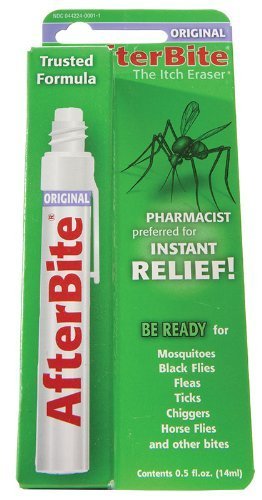 During this period, it is necessary to monitor the child. If the child has any complaints, such as fever, rash on the body, you should contact the pediatrician, indicating the fact of suction. It is worth remembering that if the fact of tick suction is not established, it cannot be guaranteed that it was not there. After a bite, the tick can fall off on its own, and the pathogen can enter the blood, ”said Alexei Rtishchev, an infectious disease specialist at the Morozov Children’s Hospital.
During this period, it is necessary to monitor the child. If the child has any complaints, such as fever, rash on the body, you should contact the pediatrician, indicating the fact of suction. It is worth remembering that if the fact of tick suction is not established, it cannot be guaranteed that it was not there. After a bite, the tick can fall off on its own, and the pathogen can enter the blood, ”said Alexei Rtishchev, an infectious disease specialist at the Morozov Children’s Hospital.
It is clarified that if during the epidemic season a child visited the forest or endemic areas and he developed symptoms of an infectious disease, including fever of any degree, ring-shaped rashes, you should immediately consult a doctor to prevent a possible infection.
In an adult, after being bitten by an infected tick, the temperature may rise and a rash may occur, said Natalya Prokhorova, head of the admissions department, infectious disease specialist at ICH No.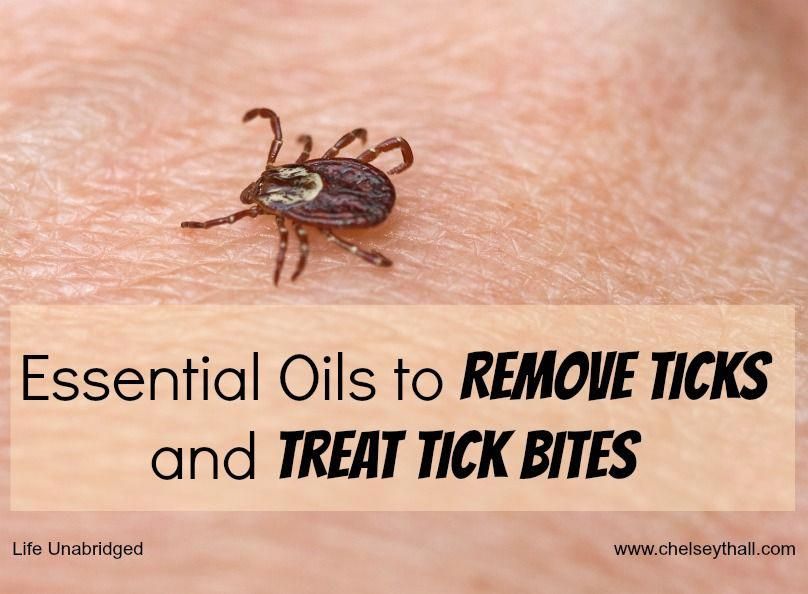 2.
2.
“Don’t panic if you get bitten by a tick. It is necessary to remove the tick as soon as possible. You can do this on your own or go to the emergency room at the place of residence, or to the office of tick-borne encephalitis immunoprophylaxis in IKB No. 2. After a bite, you need to take a tick for a test for tick-borne infections, if detected, you should consult with an infectious disease doctor, ”said Prokhorova.
The easiest way to remove a tick yourself is with a thread, Rtishchev added. On a hike and in the forest, you can pull it out of your clothes. The thread must be tied around the place where the tick stuck to the skin, and unscrewed clockwise. It is possible to reduce the likelihood of infection entering the bloodstream with the prompt removal of the insect.
“If the tick has been removed, it is recommended to promptly deliver it to the laboratory of Rospotrebnadzor or any other laboratory. Within one or two days, a study will be carried out for the presence of the causative agent of four infections – tick-borne borreliosis, tick-borne encephalitis, ehrlichiosis, and anaplasmosis. If pathogens are detected, emergency prophylaxis will be prescribed, ”Rtishchev concluded.
If pathogens are detected, emergency prophylaxis will be prescribed, ”Rtishchev concluded.
On April 23, it was reported that during the week in the Pskov region 37 people, including eight children, turned to doctors with tick bites. Compared to 2020, the number of applications decreased by 79%.
On April 17, the Russian Ministry of Emergency Situations spoke about effective ways to protect against ticks. When entering the forest, experts advise wearing special suits that protect against pests. In the absence of overalls, dress in such a way that a quick inspection can be easily carried out to detect ticks attached to the fabric. Trousers are recommended to be tucked into boots, and outerwear – into trousers.
Tick bite – symptoms and treatment, what to do if a tick bites
What a tick looks like and bites
A hungry tick can hardly be distinguished from some harmless spider. It will fit in a notebook cage: its length is only 4 mm. The tick has a tightly “linked” abdomen with the head, 8 legs. There is a proboscis on its head, with the help of which it bites through the skin and digs into the victim.
There is a proboscis on its head, with the help of which it bites through the skin and digs into the victim.
A tick that did not have time to drink blood, small: you need to have high sensitivity to feel its movements on the skin
Tick saliva, like many blood-sucking ones, has an analgesic effect. This allows him to work imperceptibly and stick for a long time. Sometimes a tick can drink blood for up to 5 days if it has not been found on the body before.
The anatomy of a tick allows it to swell as it saturates – up to 10 mm. Therefore, by the size of the sucked tick, one can roughly determine how long it has been drinking blood. If the parasite is small, most likely, not much time has passed since the bite. For a doctor, the size of the parasite can be an important indicator: the longer the tick sucks blood, the greater the dose of pathogens it will have time to transmit to the victim.
This is what a well-fed tick looks like. He can suck blood for several days, then disappears
It is precisely the stuck mites that are dangerous. While the parasite is crawling over the body, it cannot infect its victim with anything. The bloodsucker chooses a place for a bite carefully and, in search of a suitable site, can examine the skin for several hours.
While the parasite is crawling over the body, it cannot infect its victim with anything. The bloodsucker chooses a place for a bite carefully and, in search of a suitable site, can examine the skin for several hours.
However, cases are known when infected patients claimed to have noticed a tick before it had time to stick. Perhaps the tick is “testing” some areas of the skin in search of an ideal place to bite – and this is enough to transmit the infection.
More often, ticks bite between the fingers and buttocks, in the groin, under the knees, in the waist, under the arm, on the neck, behind the ears, on the scalp.
A small red spot up to 1 cm in diameter remains at the site of the bite – as from a mosquito bite.
Ticks choose to bite warm areas with thin and delicate skin – where blood vessels are close
What to do if a tick has stuck
The main rule is to remove it without sudden movements and the sooner the better.
The choice of tactics depends on the situation. If there is an emergency room nearby, it is advisable to seek help there.
If there is an emergency room nearby, it is advisable to seek help there.
If there is no way to quickly get to the doctor, it is reasonable to get rid of the tick yourself.
How to properly remove a tick
It is safer to do this with rubber gloves or through a plastic bag. It is easier to protect the skin this way: if an infected tick is accidentally crushed, it is possible to become infected even through small wounds and cuts on the fingers.
How to remove a tick yourself:
- Take tweezers. Sometimes it is advised to use a strong thread or a special lasso pen to remove a tick (these are sold in pharmacies), but Rospotrebnadzor recommends tweezers. You cannot pull out the tick with your hands.
- Grasp the tick as close to the skin as possible. If a thread is used, it must be carefully tied around the proboscis, but not too tight so as not to cut the body of the parasite. It is impossible to squeeze the tick: viruses and bacteria are concentrated in its insides.
 For the same reason, it is not recommended to use oil, nail polish or burn it out with a match to remove the tick. Under the influence of aggressive irritants, the tick begins to suffocate and can release a large amount of infected fluid into the wound – saliva or intestinal contents.
For the same reason, it is not recommended to use oil, nail polish or burn it out with a match to remove the tick. Under the influence of aggressive irritants, the tick begins to suffocate and can release a large amount of infected fluid into the wound – saliva or intestinal contents. - With effort, but slowly and calmly pull up, slightly swinging. If a thread is used, its ends must be pulled apart, pulled and lifted. At the same time, it is not recommended to pull out or pull the tick, because the head or part of the oral apparatus, together with the salivary glands, can come off and remain in the wound. Then the infection will continue even after the removal of the parasite.
- Treat the bite site and hands with an antibacterial agent (eg, iodine or chlorhexidine solution). If neither is available, use soap and water.
- Submit a tick for analysis. To do this, it must be placed in a jar or container. Close the container with a double layer of gauze or any other fabric, secure tightly with an elastic band.

It is important to grasp the sucked tick correctly so as not to damage it and pull it out completely
Externally infected ticks do not differ from others. Whether the parasite is contagious or not, a PCR test will show.
It is advisable to put a damp cotton pad or blade of grass into the container with the tick. So it is more likely that the bloodsucker will reach the laboratory alive. Then the result of the study will be as accurate as possible.
In the body of a dried and crushed tick, pathogens are more difficult to identify. Foreign substances such as oil or gasoline, in which ticks removed from the body are often soaked, also make research difficult.
Comprehensive test for tick-borne infections: borreliosis, tick-borne encephalitis, ehrlichiosis, anaplasmosis (PCR, tick, quality)
Tick 230 2 days
230 bonuses
2,300 ₽
Add to cart
Tick 0 ₽
What to do if you cannot remove the tick completely
If the head or proboscis of the tick remains in the wound, they must be removed with sterile tweezers or a needle in the same way as a splinter is removed.
If you are not sure that it will be possible to do this efficiently and painlessly at home, it is better to contact the emergency room or the surgeon’s clinic.
How allergy to a tick bite manifests
Allergy is indicated by redness, swelling and burning in the bite area. They occur immediately after the tick is sucked or within 2 days. The reaction is caused by allergens contained in the saliva of the parasite. After taking antihistamines, symptoms usually disappear within 24 to 48 hours.
The development of a severe allergy can be suspected when, after a bite, lacrimation, sneezing, nasal congestion, headache, cough, suffocation appear. To prevent anaphylaxis (an acute allergic reaction, a life-threatening condition), an emergency ambulance is required.
In any case, even mild allergy symptoms should not be ignored. There is a risk of confusing them with the first signs of infectious diseases transmitted by ticks.
What diseases can a tick infect
Ixodid ticks are carriers of a number of viruses, bacteria and protozoa. Once in the blood of humans and animals, these pathogens cause infectious diseases.
Once in the blood of humans and animals, these pathogens cause infectious diseases.
The most common of them are: tick-borne encephalitis, borreliosis, ehrlichiosis, anaplasmosis and babesiosis. They can be identified by laboratory tests. It is preferable to take a removed tick for analysis.
Comprehensive test for tick-borne infections: borreliosis, tick-borne encephalitis, ehrlichiosis, anaplasmosis (PCR, tick, quality)
Klesh 230 2 days
230 bonus points
2,300 ₽
Add to cart
Klesh 0 ₽
However, if the tick cannot be saved, the blood of the bitten can be examined. An analysis for pathogens carried by the parasite will be indicative as early as 10 days after a tick bite – in the viremia phase, when the pathogen circulates in the blood. Accurate diagnosis will help to start treatment on time, thereby reducing the risk of possible complications.
Comprehensive test for tick-borne infections: borreliosis, tick-borne encephalitis, ehrlichiosis, anaplasmosis (PCR, plasma, quality)
Ven.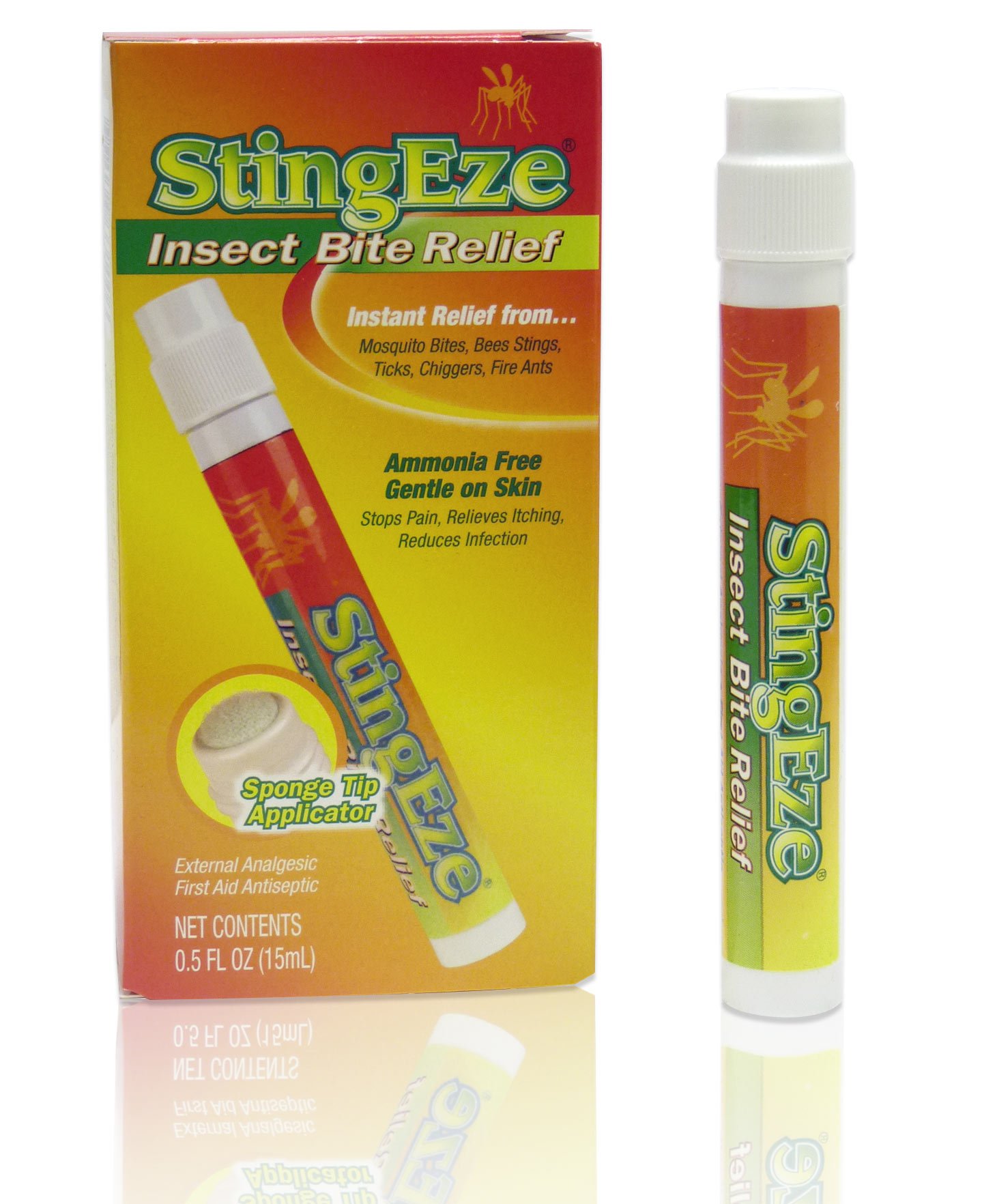 blood (+140 ₽) 150 2 days
blood (+140 ₽) 150 2 days
150 bonuses
1,500 ₽
Add to cart
Ven. blood 140 ₽
Tick-borne encephalitis
Viral tick-borne encephalitis (TBE) is an acute infectious disease. It is caused by a pathogen from the flavivirus family. The pathogen lives and develops in the salivary glands of the tick. When the parasite bites another victim, the virus enters the bloodstream. This is how infection occurs.
You can become infected with tick-borne encephalitis if you drink the raw milk of infected goats and cows. The virus in dairy products dies only during pasteurization.
The severity of the disease depends on the subtype of the virus. When infected with the Far Eastern subtype, the likelihood of developing a severe form of tick-borne encephalitis is high. And diseases caused by the Siberian subtype of the virus more often become chronic. But any subtype of the virus can cause the entire spectrum of clinical forms of tick-borne encephalitis – from mild febrile or asymptomatic to severe focal.
TBE virus is a neurotropic virus. That is, it acts purposefully – it hits the central nervous system. Therefore, in about a third of patients, the infection affects the brain and spinal cord. Meningoencephalitis may develop, which leads to serious and often irreversible neurological consequences: paralysis, tremor of the limbs, speech and vision disorders, etc. According to statistics, about 2% of cases of the disease end in the death of the patient.
The course of the disease is determined by the behavior of the virus in the blood of the infected. There are various forms of infection, including:
- febrile – characterized by an increase in body temperature against the background of general intoxication (symptoms as in ARVI). This form responds well to treatment and rarely leads to complications;
- meningeal – the most common form in which the virus infects the membranes of the spinal cord and brain;
- meningoencephalitic – brain cells are affected by the virus;
- poliomyelitis – the virus mainly affects the neurons of the spinal cord;
- polyradiculoneuritis – with this form, peripheral nerves suffer, which can lead to ascending paralysis (complete loss of movement, which starts from the legs and spreads upwards, gradually captures the torso, arms, muscles of the face, pharynx, larynx, tongue).

The focal form of tick-borne encephalitis is characterized by a two-wave course. In this case, the acute phase of the disease proceeds in two stages. There is a clear (asymptomatic) gap between them, which can be mistaken for recovery. It lasts 1-3 weeks, after which the second wave comes. As a rule, it proceeds harder than the first.
The incubation period lasts up to 28 days, although there is also a rapid onset of the disease the very next day after the bite. Regardless of the form, the symptoms are approximately the same at the initial stage of the disease.
Moreover, there may be no obvious manifestations by which tick-borne encephalitis can be easily recognized. Usually this is a typical condition for infections: weakness, chills, high temperature (up to 38–39 ° C), pain in muscles and joints.
To prevent complications, patients are given anti-tick immunoglobulin or normal human immunoglobulin .
Human anti-tick immunoglobulin is a specially purified blood serum from a donor who has been ill with tick-borne encephalitis.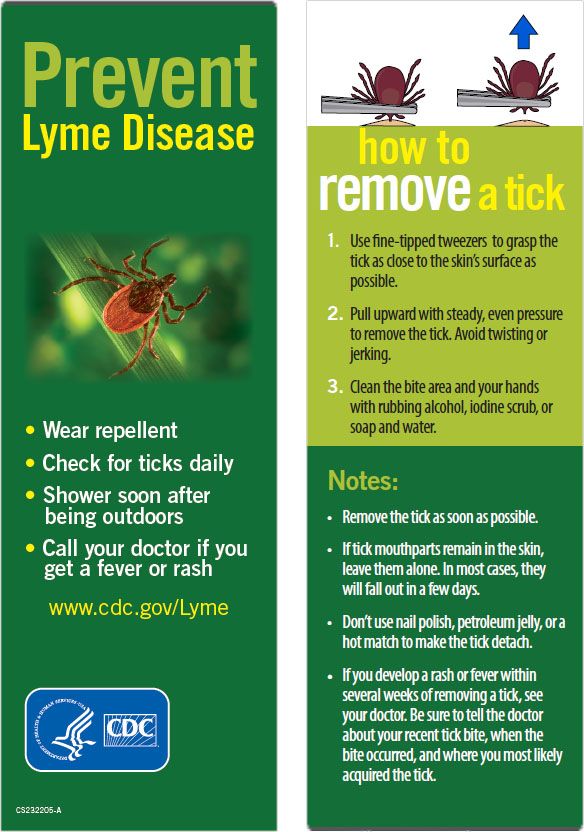
Normal human immunoglobulin is a serum that contains a spectrum of non-specific protective proteins. They do not target a specific pathogen.
However, in the WHO recommendations for the treatment of tick-borne encephalitis, this measure is considered insufficient and does not guarantee 100% protection against the disease. In addition, immunoglobulin is only effective during the first 72 hours after a tick bites.
Vaccination remains the only reliable way to prevent severe encephalitis. The standard scheme involves the introduction of 2-3 doses of the vaccine, depending on the drug. Immunity begins to develop 2 weeks after the second injection. Therefore, it is important to get vaccinated before the tick season.
There is also an accelerated regimen where the vaccine is given twice, 7 to 30 days apart, to provide the necessary protection.
After 3–7 days of infection, IgM antibodies appear in the blood. These are early antibodies, they are not able to neutralize the virus.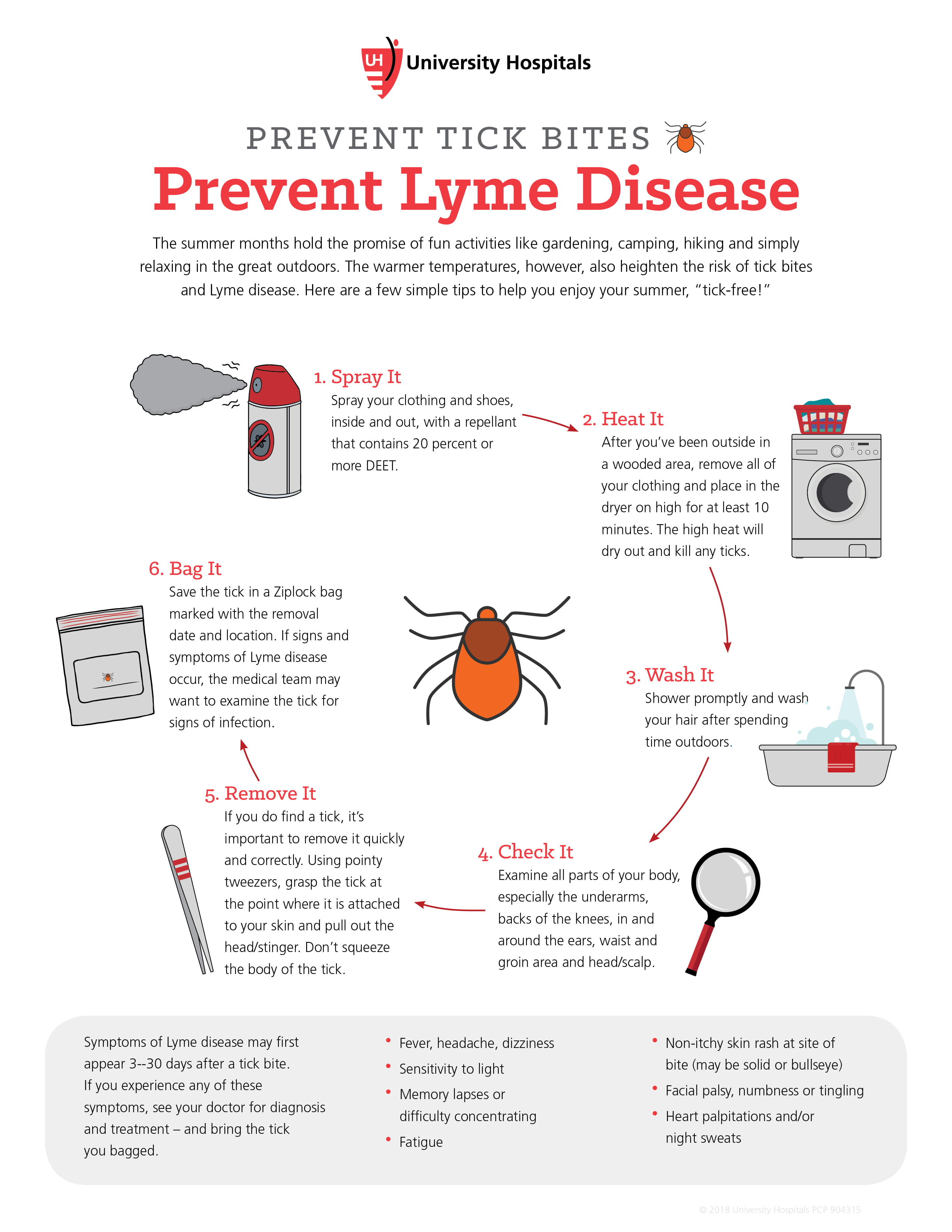 If you donate blood for analysis during this period, the presence of these antibodies will indicate the acute phase of the disease.
If you donate blood for analysis during this period, the presence of these antibodies will indicate the acute phase of the disease.
Over the next 2 weeks, the IgM titer gradually decreases, but the titer of late IgG antibodies increases. They neutralize the virus. At the same time, an additional defense mechanism is launched – the complement system. That is, immunity builds up strength to fight infection.
Tick-borne encephalitis virus IgM (n/col.)
Ven. blood (+140 ₽) 58 8 days
58 bonuses
580 ₽
Add to cart
8 days
Ven. blood 140 ₽
Tick-borne encephalitis virus IgG (col.)
Ven. blood (+140 ₽) 54 8 days
54 bonuses
540 ₽
Add to cart
8 days
Ven. blood 140 ₽
TBE virus, RNA (TBE Virus, PCR) plasma, quality.
Ven. blood (+140 ₽) 52 2 days
52 bonuses
520 ₽
Add to cart
Ven. blood 140 ₽
Borreliosis (Lyme disease)
Tick-borne borreliosis is an acute bacterial infection. Its pathogens are the bacterium Borrelia burgdorferi and several other types of Borrelia (Borrelia garinii, Borrelia afzelii, etc.). The disease affects the central nervous system, joints, skin and heart.
Its pathogens are the bacterium Borrelia burgdorferi and several other types of Borrelia (Borrelia garinii, Borrelia afzelii, etc.). The disease affects the central nervous system, joints, skin and heart.
It is believed that infection with borreliosis is unlikely if the tick has drunk blood for no longer than 2 hours. This is due to the fact that there are no or very few Borrelia in the parasite’s saliva – bacteria live in its intestines. When a tick attaches itself and drinks blood, microorganisms gradually move into the salivary glands of the parasite. And then, with saliva, they enter the blood of the bitten.
But even if the sucking tick was quickly noticed and removed, the possibility of infection cannot be ruled out. The exact answer, whether the tick was a carrier of the disease, will be given by the study of the parasite by PCR.
Comprehensive test for tick-borne infections: borreliosis, tick-borne encephalitis, ehrlichiosis, anaplasmosis (PCR, plasma, quality)
Ven. blood (+140 ₽) 150 2 days
blood (+140 ₽) 150 2 days
150 bonuses
1,500 ₽
Add to cart
Ven. blood 140 ₽
The incubation period for borreliosis lasts 7-14 days. The disease can be recognized by its characteristic symptom – erythema migrans. This is a ring-shaped skin rash with a bright red center. At the initial stage, erythema grows, then turns pale.
Erythema migrans in borreliosis may appear at the site of a tick bite or on any other area of the skin
According to other symptoms, borreliosis is easily confused with influenza and SARS: high fever, chills, headache, pain in muscles and joints, swollen lymph nodes.
Borreliosis often affects the meninges, peripheral nerves and roots, including cranial nerves, at the same time. In this case, in general, the disease proceeds in a mild form. Patients may be disturbed by weakness of facial muscles on one side of the face or bilateral (impossible to smile, puff out cheeks or frown), shooting pains in the arms, legs, neck, back and lower back, headache, numbness of the extremities.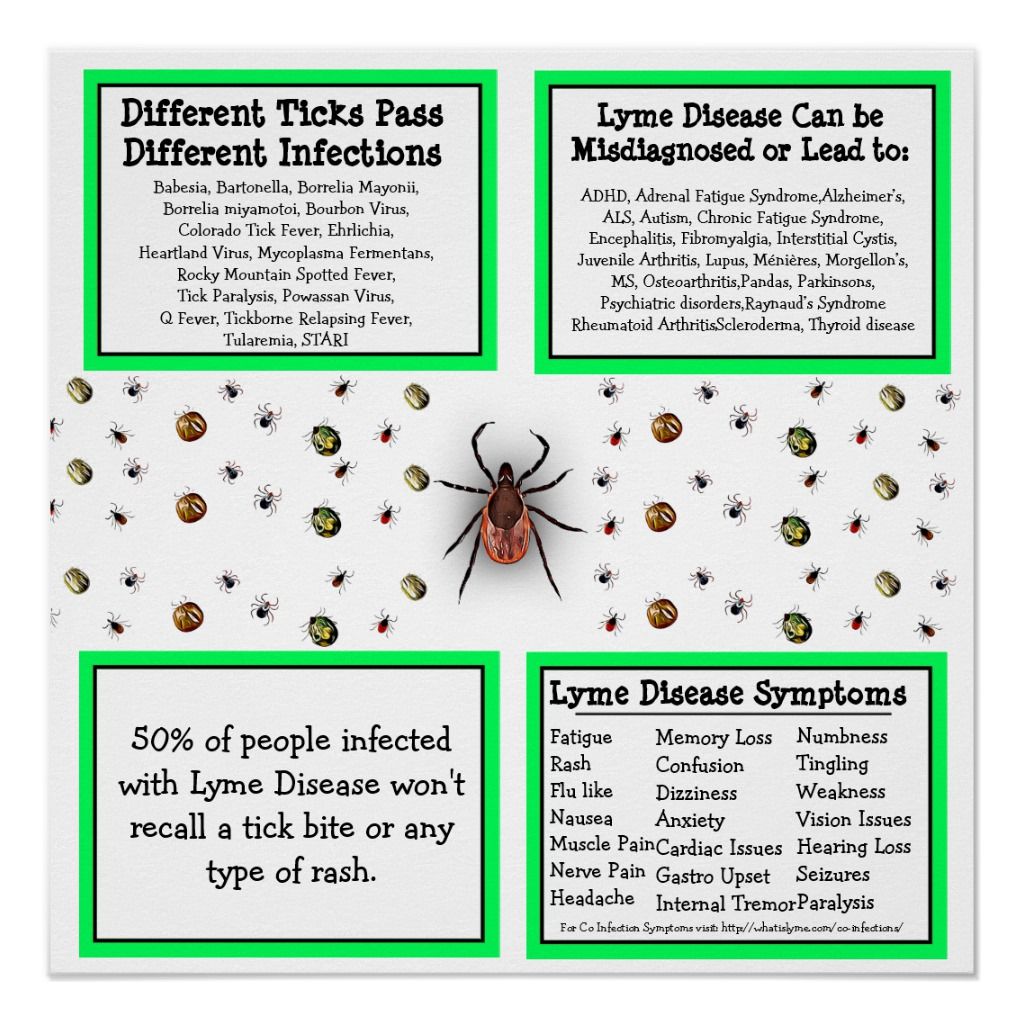
Often, borreliosis occurs in a latent form without erythema and can make itself felt several months and even years after infection.
If you develop a rash or flu-like symptoms after a tick bite, you should contact your physician or infectious disease specialist. To clarify the diagnosis, a specialist may prescribe a blood test for antibodies to borreliosis:
- M-class antibodies are found in the acute phase of the disease,
- class G antibodies are produced a few weeks after the encounter with the pathogen.
Borreliosis IgM (s/n)
Ven. blood (+140 ₽) 65 3 days
65 bonuses
650 ₽
Add to cart
Ven. blood 140 ₽
Borreliosis IgG (n/col)
Ven. blood (+140 ₽) 65 4 days
65 bonuses
650 ₽
Add to cart
Ven. blood 140 ₽
At an early stage, borreliosis is treated with antibiotics. Without timely treatment, the disease can become chronic.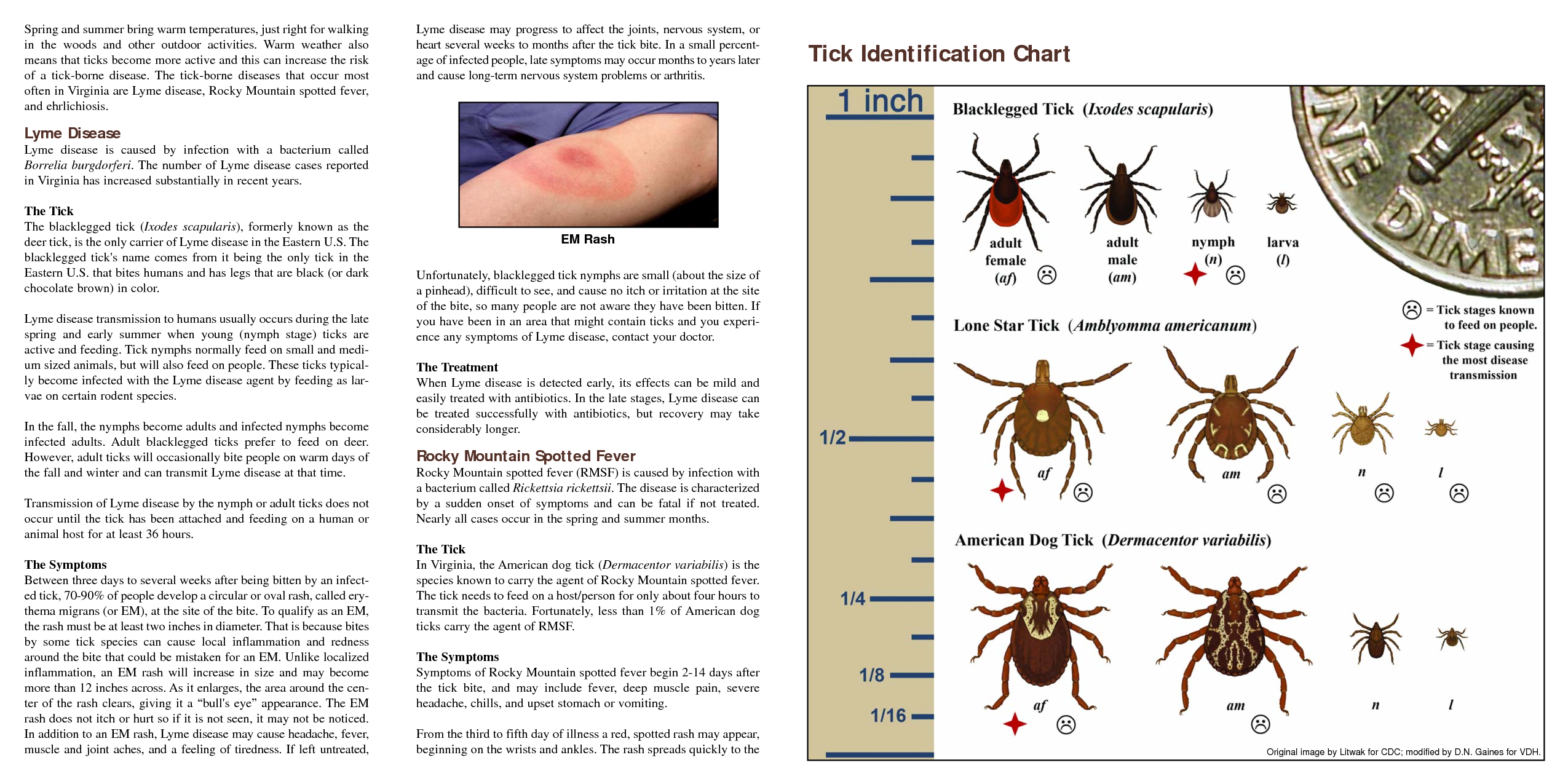
Anaplasmosis and ehrlichiosis
These are pathogens similar in type and course of infection.
Monocytic ehrlichiosis is caused by the bacteria Ehrlichia chaffeensis (Ehrlichia). Microorganisms infect monocytes (white blood cells), blood vessels, as well as cells of other organs and tissues.
The causative agent of anaplasmosis, the bacterium Anaplasma phagocytophilum, attacks granulocytes: cells of the immune system.
The incubation period for these diseases is usually 14 days. Infections are latent or flu-like in symptoms: fever, chills, sweating, weakness, headache, less often nausea, vomiting, diarrhea. With ehrlichiosis, a maculopapular rash may appear on the body.
Rash characteristic of monocytic ehrlichiosis: flat, pale red patches that do not spread to the palms and soles of the feet
Infections provoke the development of DIC – this is a blood clotting disorder in which blood clots form, bleeding occurs, the kidneys and liver fail, and the work of several body systems is inhibited at once. This condition is called multiple organ failure and, in severe cases, leads to coma.
This condition is called multiple organ failure and, in severe cases, leads to coma.
Infections can be diagnosed either by examining the tick or by testing the blood of the bitten person. True, the second analysis will be informative no earlier than 10 days after the bite.
Comprehensive test for tick-borne infections: borreliosis, tick-borne encephalitis, ehrlichiosis, anaplasmosis (PCR, tick, quality)
Tick 230 2 days
230 bonuses
2,300 ₽
Add to cart
Kleshch 0 ₽
Complex test for infections transmitted by ticks: borreliosis, tick-borne encephalitis, ehrlichiosis, anaplasmosis (PCR, plasma, quality)
Ven. blood (+140 ₽) 150 2 days
150 bonuses
1 500 ₽
Add to cart
Ven. blood 140 ₽
Antibiotics are used to treat these infections. The sooner treatment is started, the lower the chance of complications. Usually, a weekly course of medication is enough for the disease to recede.
Babesiosis
Babesiosis is an infectious disease caused by protozoa of the genus Babesia. Pathogenic microorganisms penetrate into erythrocytes. In them, babesia multiply, and then destroy and continue to capture new red blood cells.
The incubation period is about 2 weeks. At this time, babesia actively multiply in the blood. The disease makes itself felt when there are too many damaged red blood cells.
Babesiosis is characterized by the same manifestations as in ARVI or influenza:
- fatigue,
- chills,
- headache,
- pain in muscles and joints.
In addition, babesiosis shares common symptomatic features with malaria:
- hemolytic anemia with jaundice,
- hematuria (blood in urine),
- acute renal failure,
- enlargement of the liver and spleen.
Possible severe course with the development of DIC and multiple organ failure.
Babesiosis can be suspected by abnormalities in some laboratory parameters:
- reduced levels of erythrocytes, platelets and hemoglobin in the general blood test;
- elevated levels of liver enzymes in a biochemical blood test.

The disease is confirmed after the detection of the parasites themselves in erythrocytes – when examining a thin smear or a drop of blood.
Clinical blood test with leukocyte formula and ESR (with microscopy of a blood smear when pathological changes are detected) (venous blood)
Ven. blood (+140 ₽) 43 1 day
43 bonuses
430 ₽
Add to cart
1 day
Ven. blood 140 ₽
Biochemistry 8 indicators
Ven. blood (+140 ₽) 116 1 day
116 bonuses
1,160 ₽
Add to cart
1 day
Ven. blood 140 ₽
The disease occurs in a particularly severe form in people with reduced immunity. Babesiosis can develop rapidly in them. Typical symptoms are high fever, anemia, jaundice, and kidney failure.
Often, in mild babesiosis in people without concomitant diseases, the immune system copes with the infection on its own. If complications arise, antiparasitic drugs are used to treat babesiosis
How to protect yourself from encounters with ticks
Absolute protection against ticks does not exist, even if you completely refuse to go to the forest. Meeting ticks is much easier than it seems: they can live anywhere there is soil and grass.
Meeting ticks is much easier than it seems: they can live anywhere there is soil and grass.
Ticks wake up when the air warms up to 5-7°C, that is, already in March-April, depending on the region. On average, the epidemiological season for tick-borne infections lasts from April to October.
Precautions for outdoor activities:
- Choose light-colored clothing with no patterns or minimalist prints to make it easier to spot ticks.
- Prefer tall shoes and closed clothing with tight cuffs and fasteners.
- Tuck garment edges into shoes and cloth gloves.
- Don’t forget a headdress that covers the hair and ideally protects the neck (for example, a scarf).
- For additional protection, treat clothing with special sprays or ointments (repellents) that repel ticks specifically. They should contain anti-mite components, such as cypermethrin and alpha-cypermethrin.
- Do not pitch your tent on grass, only on sand or bare ground.

- Do not buy homemade milk and dairy products.
General safety rules for high tick season:
- After returning from a walk, shake out clothes: mites do not bite through the fabric, but they can crawl along it for a long time in search of an open area of skin.
- Thoroughly examine yourself and your loved ones with whom you went for a walk.
- Comb hair with a fine comb.
- Comb and inspect pets that go outside: ticks can bite pets or move from their coat to a person.
- Do not bring home bouquets of wildflowers and herbs.
The risk of encountering ticks remains until autumn. Only with the first cold weather do they leave for wintering in the upper layers of the forest floor – until the next year.
Sources
- Tactics of managing a patient after a tick bite / FGBOU VO RNIMU them. N.I. Pirogov, Ministry of Health of the Russian Federation GBUZ “ICB No. 1 DZM”, FGBNU “FNCIRIP them.



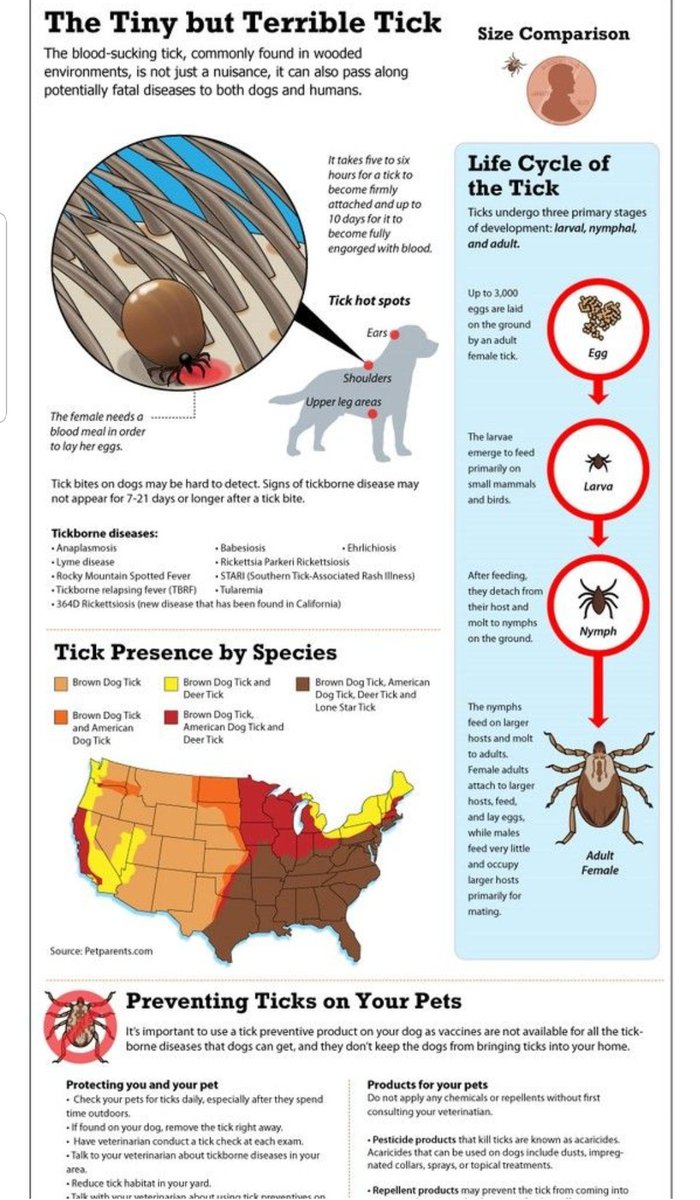 You or your doctor may be able to make connections between them.
You or your doctor may be able to make connections between them.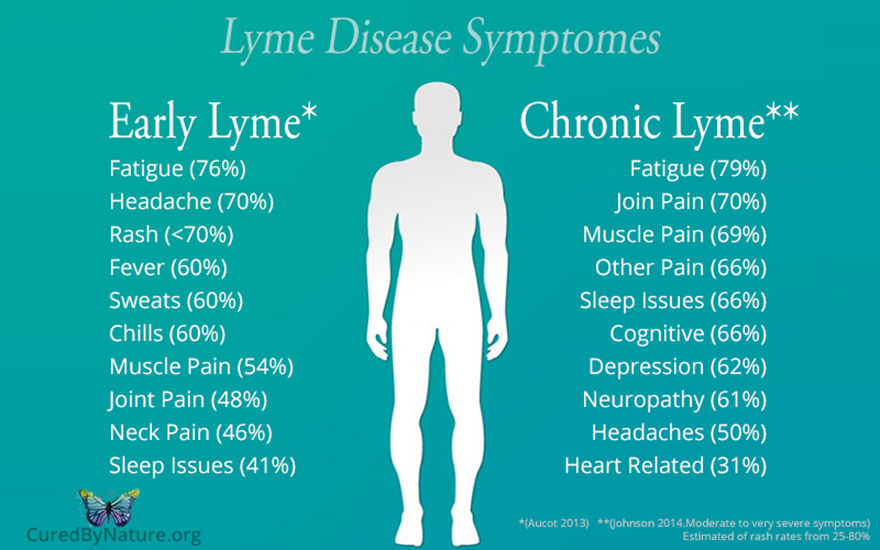 Symptoms include fever, headache and a rash. If not treated early with the right antibiotic, this tick disease can be deadly.
Symptoms include fever, headache and a rash. If not treated early with the right antibiotic, this tick disease can be deadly.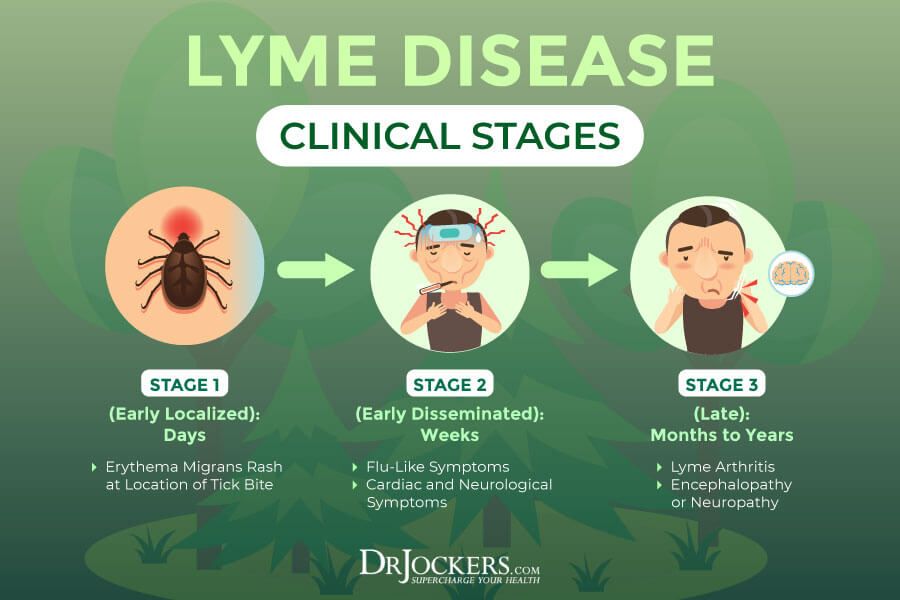 For the same reason, it is not recommended to use oil, nail polish or burn it out with a match to remove the tick. Under the influence of aggressive irritants, the tick begins to suffocate and can release a large amount of infected fluid into the wound – saliva or intestinal contents.
For the same reason, it is not recommended to use oil, nail polish or burn it out with a match to remove the tick. Under the influence of aggressive irritants, the tick begins to suffocate and can release a large amount of infected fluid into the wound – saliva or intestinal contents.